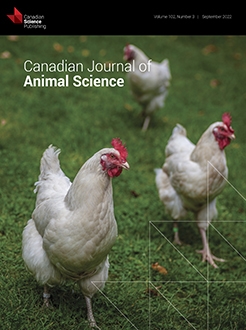Hydrogenated fat-embedded calcium gluconate (HFCG), a prebiotic mixture designed to target the hindgut, has improved milk and component yields when supplemented in mid-lactation cows, likely due to improved hindgut health. The objective of this study was to evaluate production responses to HFCG when fed to dairy cattle over a full lactation. Seventy-four Holstein cows (21 primiparous, 53 multiparous) were used in a randomized complete block design comparing supplementation with HFCG (approximately 16 g/day supplement delivering approximately 6.4 g active ingredient) to a negative control from approximately 21 days prior to calving until end of lactation. In multiparous cattle supplemented with HFCG, average daily milk protein yield (P = 0.037) was increased during the first 8 weeks of lactation, while average daily yields of milk fat, and fat- and energy-corrected milk tended (P ≤ 0.075) to increase over the same period of time. Increased yields were likely supported by the concurrent increase in dry matter intake (P = 0.036). Future work is needed to characterize the mode of action of this product within both the hindgut lumen and host, as well as investigate the potential differential responses between primiparous and multiparous animals over the course of lactation.
Le gluconate de calcium incorporé au gras hydrogéné (HFCG — « hydrogenated fat-embedded calcium gluconate »), un mélange prébiotique conçu pour cibler l’intestin postérieur, a amélioré les rendements de lait et des composantes, lorsqu’ajoutés comme supplément auprès des vaches en mi-lactation, probablement imputable à une santé améliorée de l’intestin postérieur. L’objectif de cette étude était d’évaluer les réponses de production au HFCG, lorsque donné aux bovins laitiers sur une lactation complète. Soixante-quatorze vaches holsteins (21 primipares, 53 multipares) ont été utilisées dans un design expérimental à bloc complètement aléatoire comparant la supplémentation avec soit le HFCG (approximativement 16 g/jour du supplément, livrant approximativement 6,4 g de l’ingrédient actif) ou un témoin négatif, à partir de 21 jours avant le vêlage jusqu’à la fin de la lactation. Chez les bovins multipares avec suppléments de HFCG, le rendement moyen quotidien en protéines du lait (P = 0,037) était augmenté durant les 8 premières semaines de lactation, tandis que les rendements moyens quotidiens de gras du lait et de lait corrigé pour le gras et l’énergie tendaient (P ≤ 0,075) a augmenter au cours de la même période de temps. Les rendements améliorés étaient probablement supportés par l’augmentation simultanée de la consommation de matières sèches (P = 0,036). Des études ultérieures sont nécessaires afin de caractériser le mode d’action de ce produit dans le lumen de l’intestin postérieur et l’hôte, ainsi que pour étudier les réponses différentielles potentielles entre les animaux primipares et multipares au cours de la lactation. [Traduit par la Rédaction]






